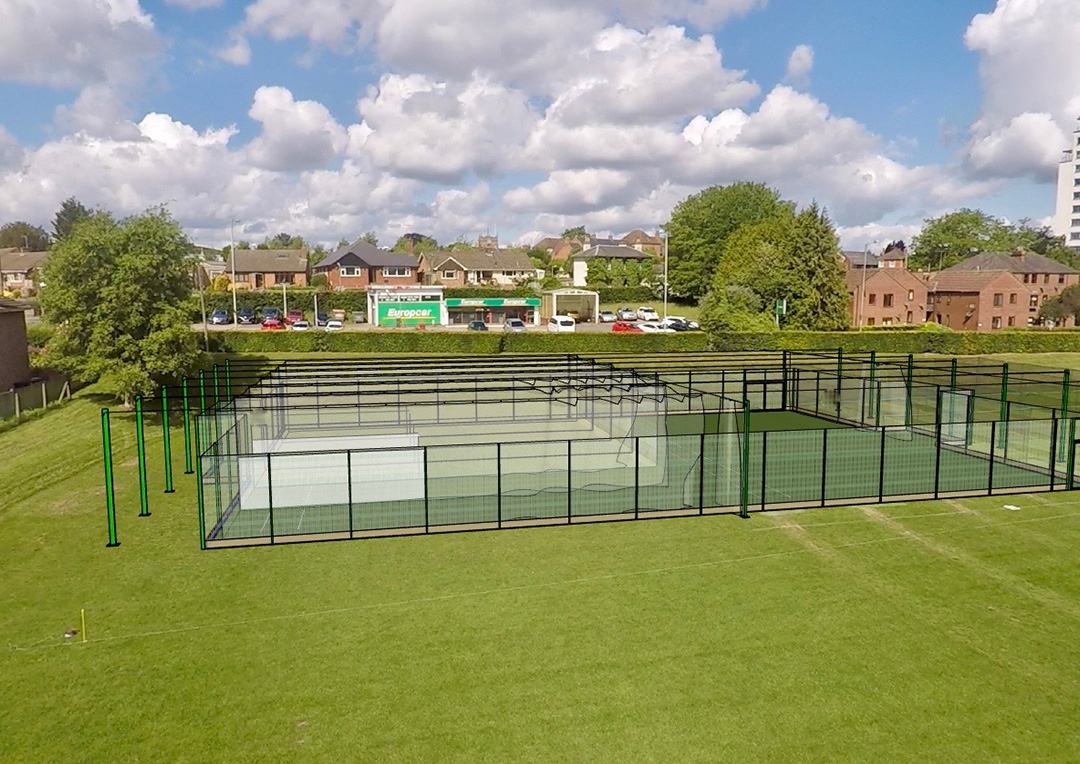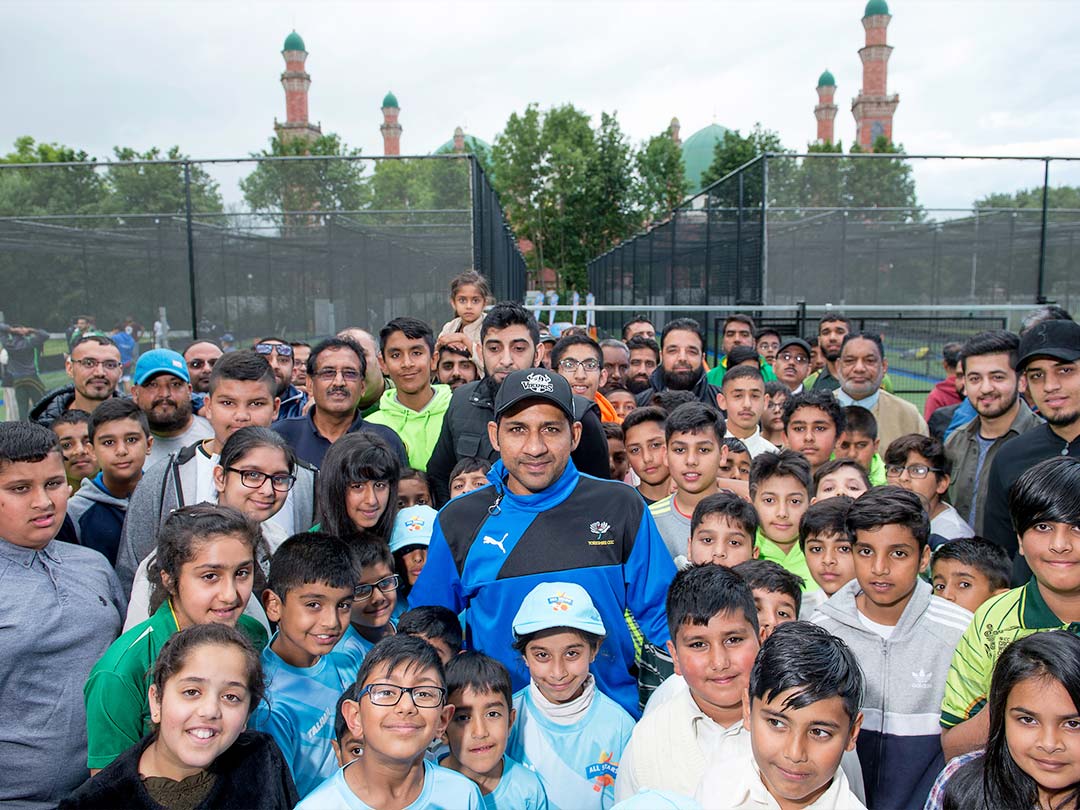Planning & Funding Support
Grants | Applications | Design Drawings

The installation of a new cricket pitch – be it a new natural cricket square or an artificial cricket match pitch or practice facility – is a significant undertaking. The project will take major legwork in terms of raising capital, getting the necessary planning permissions and selecting the best products and suppliers to bring a vision to reality.
Having been involved in countless natural and non-turf cricket pitch design and construction projects over the years, we are ideally placed to help support and advise you through the process of acquiring planning permission and negotiating grant funding.



From a technical and guidance perspective, any works which cannot be regarded as ‘Agricultural Maintenance’ may require planning permission. Having dealt with multiple planning authorities all over the country, we do see varying perspectives – however, it is vital that your local planner is contacted once you have decided the type and scale of your proposed scheme, to establish good and open communication.
Negotiating the planning process can be daunting, but our team has vast experience in submitting planning proposals and we are here to help. Our in-depth topographical surveys, using GPS surveying equipment to produce topographical maps, alongside our understanding of geographical and geological site influences, enables us to put forward robust proposals.
We generate our own facility CAD drawings and augmented images of the finished facility which, alongside detailed design specifications and costs, can really ‘tell the story’ of your proposed project; helping to take away any preconceived negative ideas and gain the confidence of any planning authority.
Installing new natural or non-turf cricket facilities represents significant investment, and many clubs need to look at various ways of generating the required capital. Fortunately, there are a number of funding streams and grants available that clubs can apply to, alongside their own fundraising activities.
Initially we would always recommend that a cricket club contact the local cricket board and regional ECB representatives, plus Sport England. We find that useful contacts tend to be:


Applying for funding and preparing bids takes time and energy – while many clubs manage the process very successfully in-house, there are professional funding agencies out there who can handle the process on your behalf. Over the years, we have worked with two very successful funding agencies; both of which we would happily recommend. Strategically placed to cover the north and south of the country, both parties provide an initial no obligation consultation free of charge. Funding streams are continually changing and evolving depending on factors such as the size of project, time of year and what sectors cash is being funnelled into. Potential sources of funding could include:
For an informal chat about getting your project off the ground, contact us.
The majority of cricket clubs in the UK are not-for-profit organisations run and managed entirely by volunteers. Traditionally, the main source of income comes from annual membership subscriptions, bar takings, sponsorship and fundraising events. These finances are regularly stretched to the limit as they are required to cover everything from hosting home fixtures, purchase of kit, facility maintenance and other investments. For the majority of cricket clubs’ external investment is essential for both player development and member retention.
External grants can help clubs enhance facilities for both training and matches, and also ensure that the grounds team are provided with right equipment to ensure fixtures can take place despite challenging weather. Grant funding for cricket clubs can also help them create a comprehensive player pathway from junior to senior level by financing the development coaches and officials.
Fortunately, there are a host of different funding streams open to cricket clubs that can help finance both revenue (i.e. coaching schemes) and capital (i.e. construction projects) based schemes. This article explains what funders are looking for in applications and shares some good practice provided by a number of cricket clubs across the UK.
However, whether a cricket club is looking to buy a new ground cover system, develop its artificial cricket practice net facilities, install an artificial cricket match pitch, overhaul a natural cricket table or invest in new coaching aids there’s always the question of where the funds will come from.
Grant funding is focused on two particular areas; revenue – normally smaller amounts up to £10,000 – and capital, larger amounts for construction schemes, either new build or refurbishment.
External funders offering grants for sports clubs are keen to fund new and enhanced activities but will not consider general running costs. For example, a scheme that aims to develop participation rates by running a holiday club would be eligible, but a project that covers utility bills would not be considered.
Cricket club funders are also keen to leave a legacy. To demonstrate this, applicants are regularly asked to demonstrate how a project will become self-sufficient once funding has stopped. For example, a cricket club could apply for funds to run a holiday scheme and support this with investment for parents to attend a variety of coaching courses. This project would help increase participation levels and provide a framework of coaches to retain new members in the long term. Revenue funding streams cannot be used as part funding for larger, capital schemes.
Construction projects, whether they be new build or refurbishment, are classified as a capital scheme. An example of a capital scheme for a cricket club would be the installation of an ECB approved non-turf practice facility, or the extension of an existing pavilion to provide female changing rooms.
Unfortunately, the days of a single sports grant funder financing the majority of a large capital scheme have gone. To fund this type of project applicants will now need to make a number of applications to a variety of sources. Although this process can be extremely time consuming, the creation of a clear project plan can provide background and evidence for need that can be used for multiple applications. From experience, total-play has witnessed cricket clubs make multiple funding applications to a number of sources, including national governing bodies of sport, Sport England, landfill operators and local authorities.
It is also worth mentioning that the majority of capital schemes require planning permission, and this is something that cricket clubs need to consider as part of their project planning.
Over the years, total-play has worked on projects where clients have drawn on a hugely diverse range of cricket club funding streams. As an ECB Code of Practice Installer for Non-Turf Pitch Systems, we have developed no less than six ECB approved artificial cricket pitch systems. Our installations meet the ECB and Sport England’s criteria for funded projects. This has seen us work on countless projects to install non-turf cricket match pitches and artificial cricket practice facilities over the years, at cricket clubs ranging from grass roots level to first class and also on behalf of schools, universities and local authorities.
What the majority of these projects have in common is that they will almost all have benefited from some kind of third-party sports club grant, including several of those mentioned above, as well as and some historic streams such as the Lord’s Taverner’s Cricket Club Funding.









